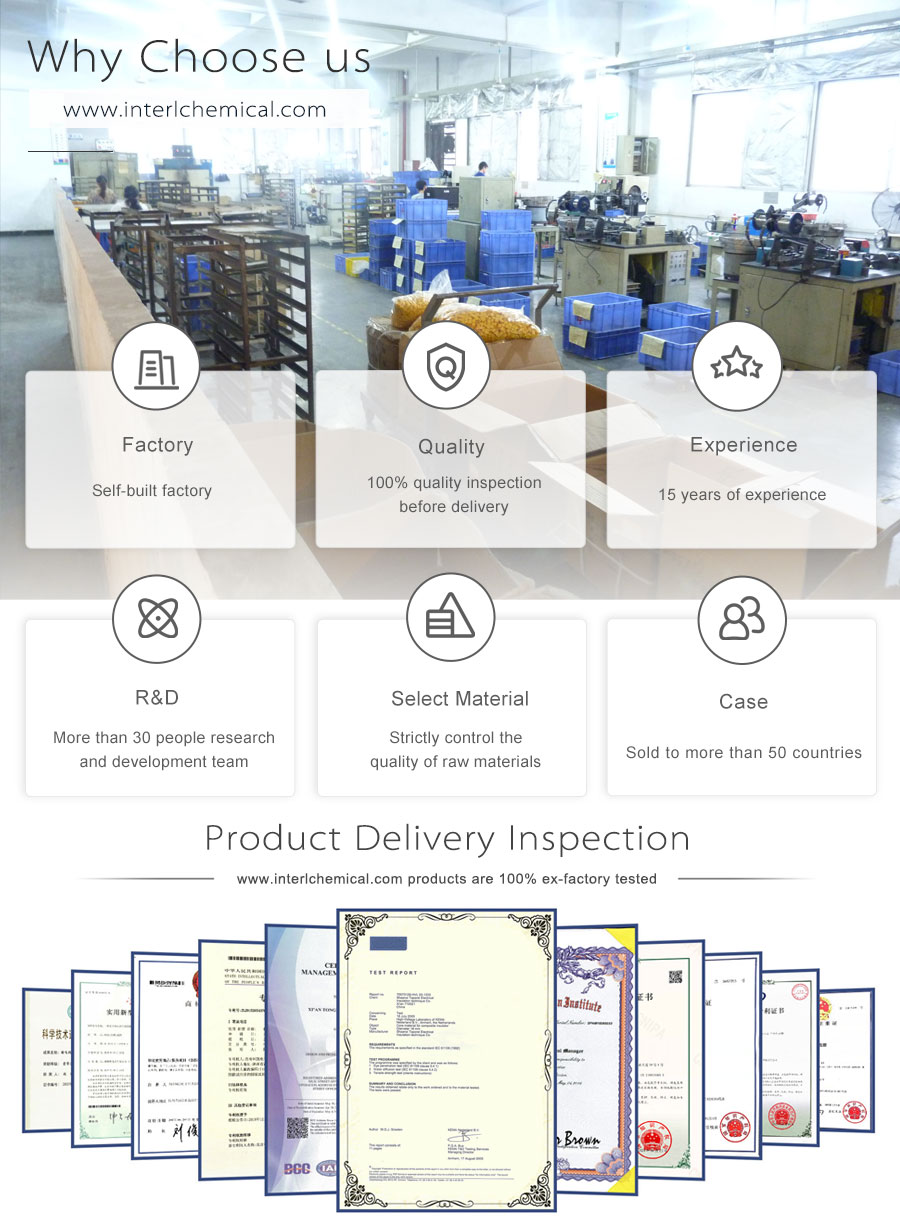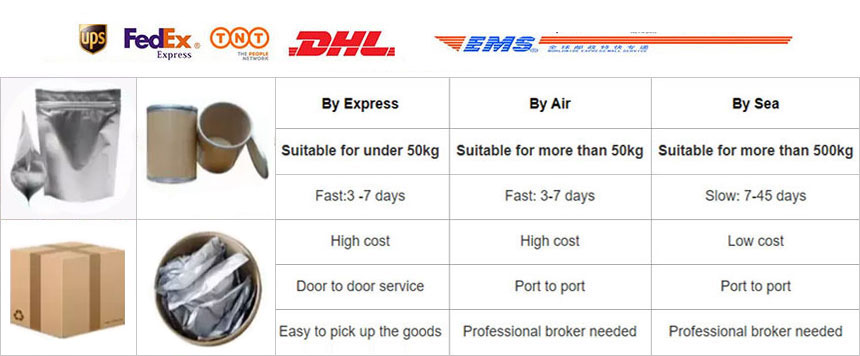Phone: 86-29-89601602
Mail: sales27@interlgroup.com
Add: Room 305 , 3/F , Haipai Decoration Office Building , Yudu Avenue , Yuncheng , Shanxi
Factory Supply 2-propanol liquid CAS 67-63-0 Raw Materials
Product Overview:
2-propanol liquid is also known as fire wine, dimethyl methanol, 2-propanol, English: isopropylalcohol, the simplest sec-alcohol, and is one of the isomers of n-propanol. A kind of colorless flammable liquid with strong odor, has the odor similar to the mixture of ethanol and acetone, its odor is not big. 2-propanol CAS 67-63-0 Soluble in water, alcohol, ether, benzene, chloroform and other most of the organic solvents, can be miscible with water, alcohols, ether, and water can be formed into an azeotrope. Density (specific gravity): 0.7863g/cm3, melting point k:-88.5°C, boiling point: 82.5°C, flash point: 11.7°C, autoignition point: 460°C, refractive index: 1.3772. 2-propanol Raw Materials vapors can cause slight irritation to eyes, nose and throat; 2-propanol Raw Materials can be absorbed by the body through the skin. Materials can be absorbed by the body through the skin.2-propanol liquid vapor and air can form an explosive mixture. The explosion limit is 2.0%~12% by volume. 2-propanol liquid is a medium explosive hazardous material. It is a flammable and low toxicity substance. The toxicity of the vapor is two times that of ethanol, and the toxicity is opposite when taken internally.
Factory Supply 2-propanol liquid CAS 67-63-0 Raw Materials Attributes
MF:C3H8O
MW:60.1
EINECS:200-661-7
Specification:2-propanol liquid
Sample:2-propanol liquid
Brand: 2-propanol liquid
Appearance: white liquid
Storage: Cool Dry Place
Brand: Globalchemical
Shelf Life: 2 Years
Test Method: HPLC
Factory Supply 2-propanol liquid CAS 67-63-0 Raw Materials Details
Uses and synthesis of 2-propanol liquid
2-propanol liquid is also known as fire wine, dimethyl alcohol, 2-propanol, English: isopropylalcohol, the simplest sec-alcohol, and is one of the isomers of n-propyl alcohol. A kind of colorless flammable liquid with strong odor, has the odor similar to the mixture of ethanol and acetone, its odor is not big. 2-propanol CAS 67-63-0 Soluble in water, alcohol, ether, benzene, chloroform and other most of the organic solvents, can be miscible with water, alcohols, ether, and water can be formed into an azeotrope. Density (specific gravity): 0.7863g/cm3, melting point k:-88.5°C, boiling point: 82.5°C, flash point: 11.7°C, autoignition point: 460°C, refractive index: 1.3772.

2-propanol Raw Materials vapors can cause slight irritation to eyes, nose and throat; 2-propanol Raw Materials can be absorbed by the body through the skin. Materials can be absorbed by the body through the skin.2-propanol liquid vapor and air can form an explosive mixture. The explosion limit is 2.0%~12% by volume. 2-propanol liquid is a medium explosive hazardous material. It is a flammable and low toxicity substance. The toxicity of vapor is two times that of ethanol, but the toxicity is opposite when taken internally.
Applications / Functions of 2-propanol liquid
- 2-propanol CAS 67-63-0 is used as a chemical reagent for experiments and as a reagent for chromatography.
- Extraction solvent, carrier solvent.GB2760-1996: Temporarily permitted food flavors.2-propanol Raw Materials Used in the processing of beet sugar, confectionery, nutritional supplement tablets, hop extraction, lemon oil, spice oil resin, yeast, etc..
- 2-propanol liquid has a wide range of uses as an organic raw material and solvent. As a chemical raw material, it can produce acetone, hydrogen peroxide, methyl isobutyl ketone, diisobutyl ketone, isopropylamine, isopropyl ether, isopropanol ether, isopropyl chloride, isopropyl fatty acid isopropyl ester, and isopropyl chlorinated fatty acid isopropyl ester. In fine chemicals, 2-propanol liquid can be used to produce isopropyl nitrate, isopropyl xanthate, triisopropyl phosphite, aluminum triisopropoxide, as well as pharmaceuticals and pesticides. As a solvent, it can be used in the production of paints, inks, extractants, aerosols and so on. It can also be used as antifreeze, cleaning agent, additive for gasoline blending, dispersant for pigment production, fixing agent for printing and dyeing industry, anti-fogging agent for glass and transparent plastic, etc.
- 2-propanol liquid is an important intermediate in the production of pesticides, it can be used to produce fungicides such as inoculin and isoinoculin, insecticides and acaricides such as aminopyralid, hydramethylthion, methyl isofluthion, residual methomyl, cypermethrin, etc., as well as herbicides such as ipratropium, and it can be used to prepare brominated isopropyls and chlorinated isopropyls, it is also an important intermediate in the production of pesticides.
- 2-propanol CAS 67-63-0 Mainly used in pharmaceuticals, also used as solvents, extractants, antifreeze, etc.
- Uses: 2-propanol CAS 67-63-0 is used in pharmaceuticals, cosmetics, plastics, spices, coatings, etc.
- Solvent for creosote, shellac, resin, gum, nitrocellulose. Solvent for the determination of vegetable oil by esterification analysis. Determination of barium, calcium, copper, magnesium, nickel, potassium, sodium and strontium. Extraction and separation of rare earth metals. Extraction of alkaloids. Pesticide analysis. Organic synthesis. Antifreeze components.
- Solvent of creosote, shellac, resin, gum, nitrocellulose. Determination of solvents for vegetable oils by esterification analysis, determination of barium, calcium, copper, magnesium, nickel, potassium, sodium and strontium. Sodium cobalt nitrite - isopropanol method for the determination of soil and plant potassium content, extraction of alkaloids, pesticide analysis. Organic synthesis. Antifreeze combinations. 2-propanol Raw Materials for precipitation of DNA.
Physicochemical Property of 2-propanol liquid
Colorless transparent flammable liquid, with ethanol-like odor. 2-propanol CAS 67-63-0 Miscible with water, ethanol, ether and chloroform.

production methodprocess of 2-propanol liquid
The production method of 2-propanol liquid is to synthesize isopropanol directly in water under pressure with propylene as raw material and diatomaceous earth phosphate as catalyst.
The process is to pressurize propylene and water to 2.03MPa and preheat them to 200°C respectively, mix them and enter into the reactor for hydration reaction, which is equipped with diatomaceous earth phosphate catalyst, with the reaction temperature at 95°C, the pressure at 2.03MPa, the molar ratio of water to propylene at 0.7:1, the conversion rate of propylene at 5.2%, and the selectivity at 99%, and the reaction gas is sent to the neutralization and heat exchange after After neutralization and heat exchange, the reaction gas is sent to high-pressure cooler and high-pressure separator, the isopropanol in the gas phase is recovered in the recovery tower with non-brine spray, the unreacted gas is recycled through the recycle compressor, and the liquid phase is low concentration of isopropanol (15%-17%), and 85%-87% of the aqueous isopropanol is obtained by the crude evaporation tower, and then 95% is distilled in the distillation tower, and then extracted with benzene to more than 99%. This method is the main method of producing isopropyl alcohol at home and abroad. The method does not use sulfuric acid, there is no corrosion problem, and the process is relatively simple.

There is also a sulfuric acid water law ------ that contains more than 50% of the propylene as raw material, at 50 ℃ and low pressure in the absorption tower with 75% to 85% of the concentrated sulfuric acid absorption, the absorbent will be diluted to the sulfuric acid content of 35%, in the desorption tower with low-pressure steam hydrolysis into isopropanol. The method of propylene conversion rate of up to 90% or more, to get the crude isopropyl alcohol containing isopropyl alcohol up to 50% to 60%. This method to use sulfuric acid, corrosive to the equipment, in addition, dilute sulfuric acid to be used for concentration sets. CH3CH = CH2 + H2SO4 → (CH3) 2CHOSO3H [H2O] → (CH3) 2CHOH + H2SO4
2-propanol liquid can be produced by fermentation, and 16t of grain is consumed to produce 1t of 2-propanol. Industrial use of propylene hydration method, the earlier use of sulfuric acid hydration method (also known as indirect hydration method); in 1951 the British Bunemun Chemical Industries began to use propylene direct hydration method to produce 2-propanol Raw Materials .
- 1.Indirect hydration method propylene and sulfuric acid reaction firstly get isopropyl hydrogen sulfate, the latter is hydrolyzed to 2-propanol CAS 67-63-0.
- 2.Direct hydration method: propylene and water are hydrated under temperature and pressure in the presence of catalyst.
Propylene is absorbed by sulfuric acid, and then hydrolyzed and distilled to get 2-propanol CAS 67-63-0.










